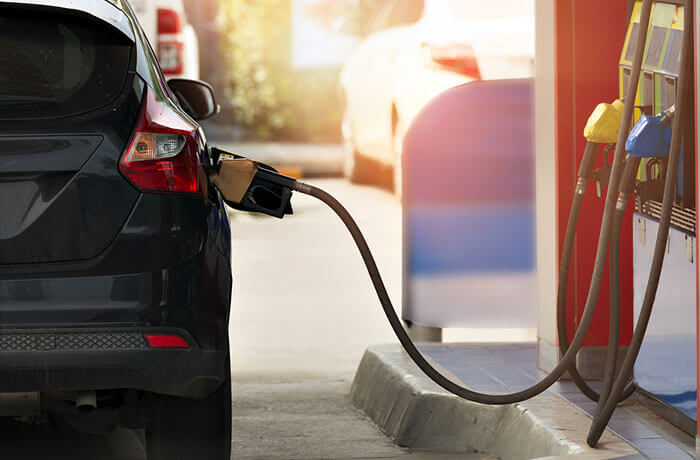Here are some of the common driving/auto bad habits that can cause damage to our cars and wallets.
Driving on empty
Do you pride yourself on ignoring your car’s gas gauge when it urges you to refuel? You might think that getting the last drop of gas out of your gas tank is the best but it’s actually bad for your car, so cut it out. Most drivers hate the thought of filling up their gas tank even when it indicates that they should, especially with the price of gasoline these days. Although, just out of bad habit, whatever the price of gas, it is tough for some car users or drivers to simply fill up the tank. Putting off this important detail and waiting for your gas tank to be empty before filling it up can cost you more than you should have spent if you just did as the gas gauge urged—in fact, it can be dangerous and downright inconvenient. According to a 2015 survey,[1] it was discovered that every year, approximately, 827,000 drivers ignore their car’s gas warning light, which results in them running out of gas and breaking down at some point. Up to 2 million drivers said they almost always drive with the gas light on, hoping to find cheaper gas.
Why you should keep your tank no less than 1/4 full
According to Consumer Reports, driving your car with the gas empty or close to empty is bad because it could damage your car: Gas acts as a coolant for the electric fuel pump motor, so when you are running very low, this would allow the pump to suck in air, which creates heat and can cause the fuel pump to wear down prematurely and potentially fail. The repair of such damage would cost a lot of money, much more than it would have cost you to fill up your tank.[2] Another problem that might cause damage to your car when you run on a low gas tank is that your car would be forced to use the gas at the bottom of the tank which has sediment from gasoline that had settled at the bottom. The lower your car’s gas level, the more the dirt gets stirred up from the bottom of the tank into your car’s fuel line and even into the engine which could damage internal parts of the engine. In this case, if your fuel filter or pump gets clogged up with dirt, you would have to flush the entire fuel system and replace your car’s fuel filter regularly. This would cost you lots of money to repair and replace. In addition, another risk of driving on a low tank is the danger of getting stranded in the middle of a busy highway or deserted area or even in an accident when the car suddenly stops running.
Here are some tips to avoid running out of gas
Keep your gas tank no less than ¼ full.
Always fill up your tank before starting out to work or on a long trip because you could have a longer ride due to unforeseen circumstances or a traffic jam.
Don’t depend on your gas gauge to inform you on how many miles you have left. For saving gas and tips on maximizing the fuel in your vehicle, use fuel economy guides. You could use online tools or even smartphone apps to find the cheapest gas near your house and save money and time driving miles to find cheap gas.
I know we’ve all been in that situation where we’re driving along, and then the fuel warning light pops up urging you to make a stop and get gas. You might be the type of driver that starts panicking or you are the opposite; relaxed and calm. Regardless of which type of driver you are, it is important for you to know that the warning light is an indication that the fuel in your car’s gas tank has reached 10 to 15 percent of your tank’s total capacity, which is the reserve level. Now, you can use that reference along with your car’s average fuel economy to calculate your remaining range. Be careful not to run the risk of your car going dry because it can cause serious and expensive problems. Always, keep that in mind the next time your car starts urging you to visit the gas station. Featured photo credit: BEN ROSSINGTON via mirror.co.uk
